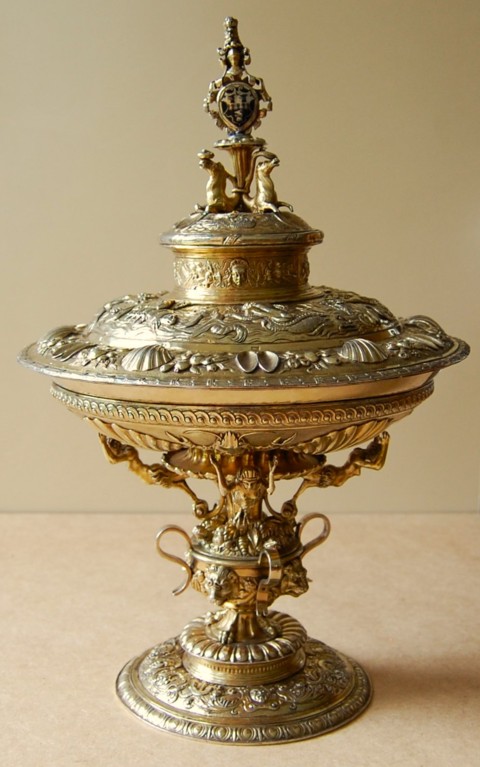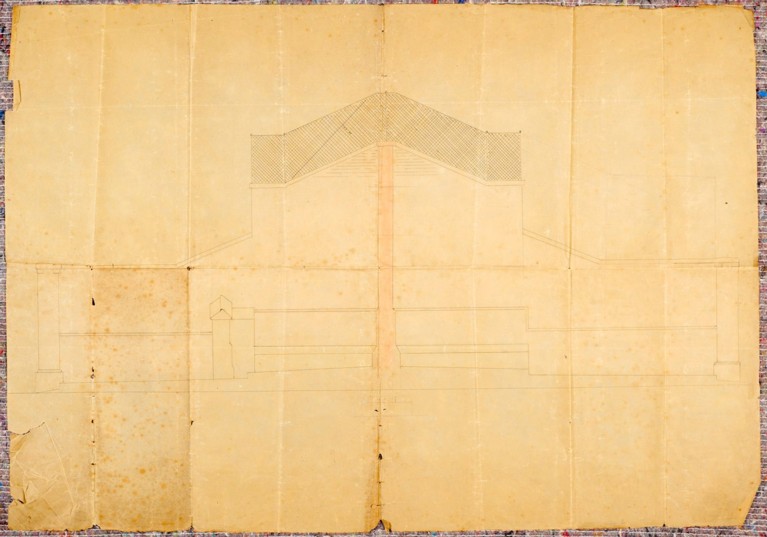Blog
1 October 2024
F is for … Founder’s Cup

The silver-gilt tazza given to the college by the Founder, Sir Walter Mildmay, is one of Emmanuel’s greatest treasures. The hallmarks show it to have been made in Antwerp in 1541/42, and its repoussé decorative work, depicting fabled sea monsters and other creatures, is of exceptional quality. Recent research indicates that the famous cup of Veere (Zeeland), thought to have been commissioned by Emperor Charles V, and closely associated with the Dutch royal family, is almost certainly by the same (unidentified) maker. Emmanuel’s cup is, if anything, of even finer workmanship, and certainty fit for a king’s table. It is therefore tempting to speculate that it may once have been owned by a Tudor monarch, which begs the question of how Sir Walter got his hands on it. He had worked as a crown financial officer since leaving Cambridge University in the 1540s, and his abilities were such that he was appointed Chancellor of the Exchequer by Queen Elizabeth I in January 1559, just a few weeks after her accession. From 1566 he was also a Privy Counsellor. These were important offices, and Sir Walter became a very wealthy man. He also had important contacts at the royal court, as his brother-in-law was Francis Walsingham, Elizabeth I’s famous spymaster, and his good friend and Northamptonshire neighbour, William Cecil, was the Queen’s chief minister. All that can be said for certain, though, is that at some point in his career Sir Walter either created, or took advantage of, an opportunity to acquire this exquisite tazza, which he personalised by adding his coat of arms to the finial of the cover. The Founder’s Cup is still used during important college ceremonials.
F is for … Fives

Fives is a handball game involving four participants (two to a team), played in a small, contained court – a sort of squash without rackets. Variants of the sport originated at Eton and Rugby schools, and when Emmanuel’s squash court complex was constructed in 1933, it incorporated an Eton fives court at one end and a Rugby fives court at the other. The building was erected on the site of an even earlier Eton court. This little structure features in no known photographs, but in December 2016 the original designs were discovered in a roll of architects’ plans of the Victorian Master’s Lodge. They comprise workmanlike drawings by John Gray & Son, builders, and are dated 1875 (one is pictured). We know from later correspondence that the court had been built of high-quality Clipsham stone, which might seem surprising, given the unpretentious nature of the building. The most likely explanation is that this was a re-use of redundant stone from the original Master’s lodgings, part of which had been demolished to make room for the Victorian Lodge (this could also account for the plans of the buildings being stored together). The demolition of the Eton court to make way for the swish 1933 suite, occasioned ‘keen regret on the part of some, to whom it had been a great boon’, but the new facility was a resounding success, and its humble predecessor was soon forgotten. The popularity of fives began to decline at Emmanuel during the 1950s, however, and by the end of the following decade the games were defunct at club level. The college authorities therefore agreed that the Rugby court would become a storeroom, and the Eton court should be extended to form a second squash court. This decision was unquestionably pragmatic, but from an aesthetic point of view the alterations are rather regrettable, as the original 1933 building was a fine example of inter-war sports architecture.
Amanda Goode, College Archivist
